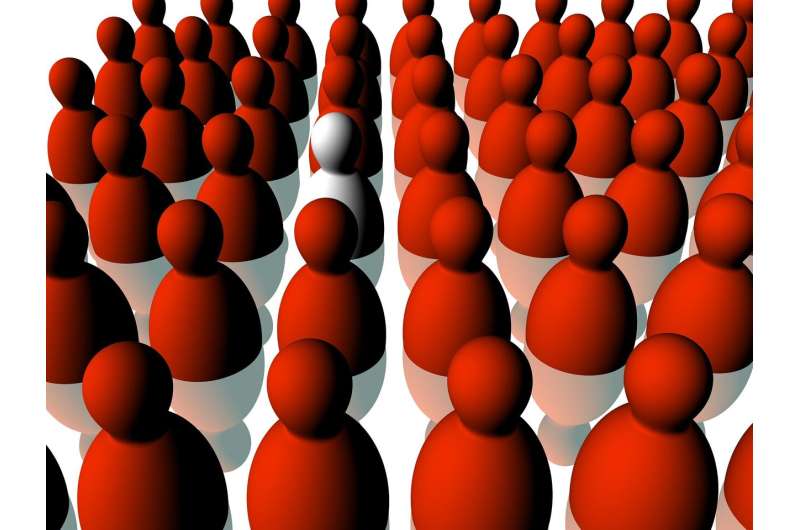Credit: CC0 Public Domain
A team of researchers from the University of California and Stanford University has found that the tendency to see people from different racial groups as interchangeable has a neuronal basis. In their paper published in Proceedings of the National Academy of Sciences, the group describes studies they conducted with volunteers and what they found.
One often-heard phrase connected with racial profiling is "they all look the same to me," a phrase usually perceived as racist. It implies that people of one race have difficulty discerning the facial characteristics of people of another race. In this new effort, the researchers conducted experiments to find out if this is valid—at least among one small group of young, white men.
In the first experiment, young, white male volunteers looked at photographs of human faces, some depicting black people, others white, while undergoing an fMRI scan. Afterward, the researchers found that the part of the brain involved in facial recognition activated more for white faces than it did for black faces.
In the second experiment, the same volunteers looked at photographs of faces that had been doctored to make the subjects appear more alike, regardless of skin color. The researchers report that the brains of the volunteers activated when dissimilarities were spotted, regardless of skin color, though it was more pronounced when the photo was of a white face.
In a third series of experiments, the volunteers rated how different they found faces in a series of photographs or whether they had seen a given face before. The researchers report that the volunteers had a tendency to rate the black faces as more similar to one another than the white faces. And they found it easier to tell if they had seen a particular white face before.
The researchers suggest that the results of their experiments indicate a neural basis that makes it more difficult for people to see differences between individuals of other races. They note that they did account for social contexts such as whether the volunteers had friends and/or associates of other races. They suggest that more work is required to determine if such neuronal biases can be changed based on social behavior.
More information: Brent L. Hughes et al. Neural adaptation to faces reveals racial outgroup homogeneity effects in early perception, Proceedings of the National Academy of Sciences (2019). DOI: 10.1073/pnas.1822084116
Journal information: Proceedings of the National Academy of Sciences
© 2019 Science X Network
























